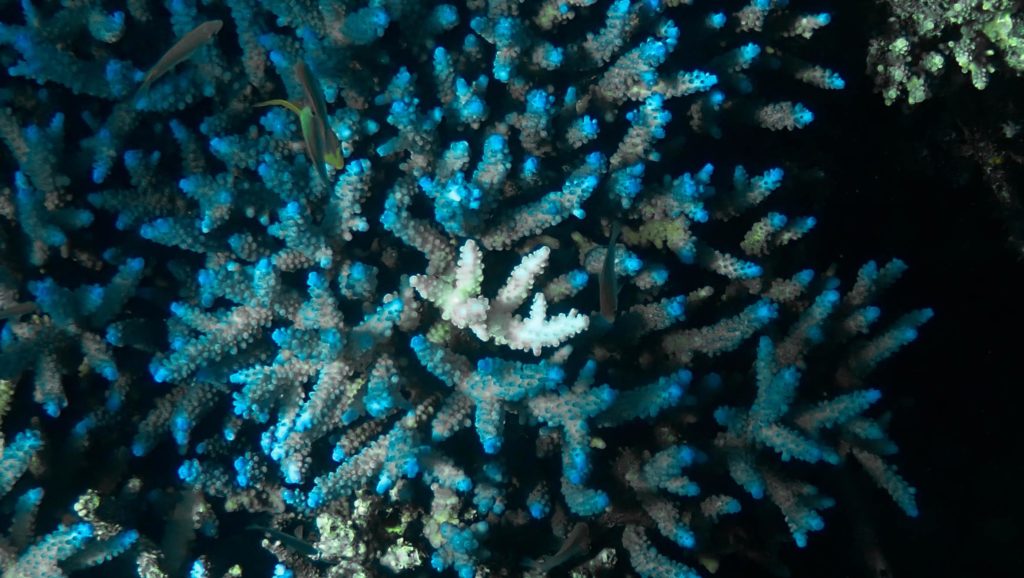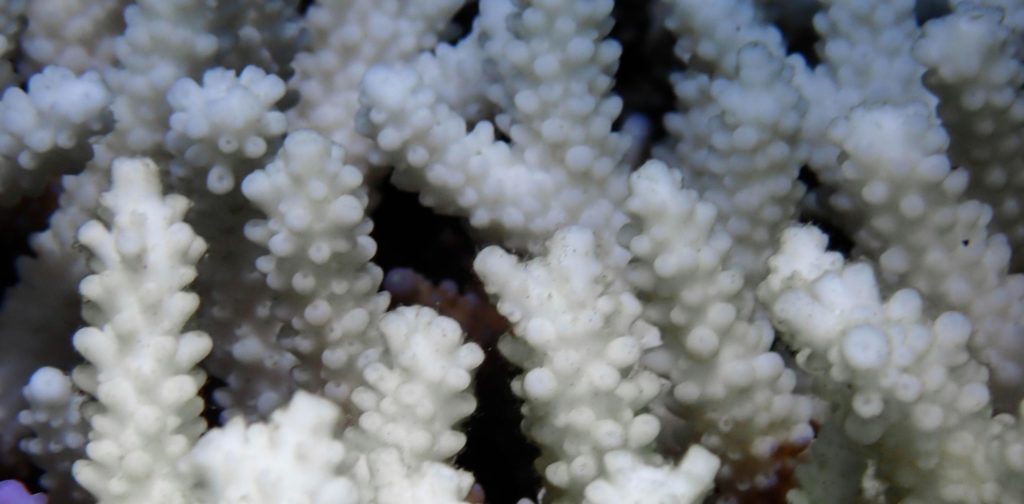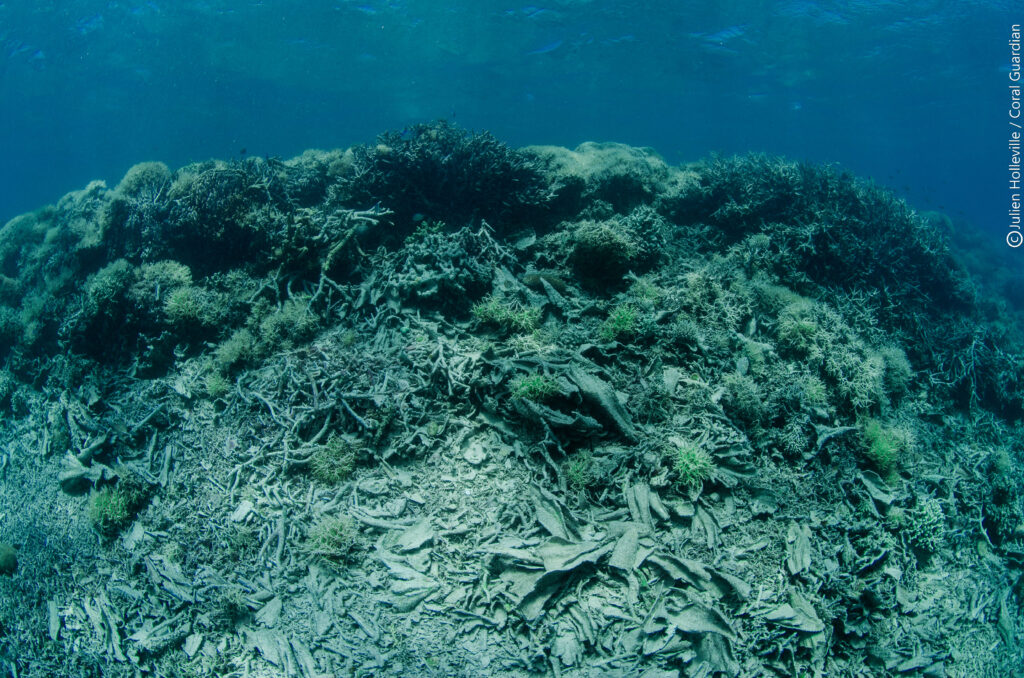

90% of coral reefs could disappear by 2050.



Ocean warming is the main factor in coral bleaching.
Ocean surface water temperature has increased by an average of 0.5°C since 1860. The IPCC predicts an increase in average air temperature of 1.5°C by 2030 to 2050. The surface waters of the oceans will therefore continue to warm.
If ocean surface temperatures continue to rise, the frequency and severity of coral bleaching will also increase, likely affecting the ability of coral reefs to adapt and provide most of the services we demand of them.
Carbon dioxide in the atmosphere is absorbed by the ocean. This causes the ocean’s pH to drop, leading to ocean acidification. This decrease in pH has negative consequences, especially for oceanic carbonate organisms such as coral reefs. This phenomenon reduces their ability to build their skeletons, making them much more vulnerable to erosion.
According to the IPCC, observations made since 1961 show that the average temperature of the oceans has increased, even at great depths, and that the ocean has absorbed more than 80% of additional heat in the climate system. This warming is causing sea levels to rise and is creating problems for coastal areas.






